Ionizing Radiation Video Series
We discovered this video series and thought it might be of interest to this community. There is no CE credit for this series, but it is useful for reference.
We discovered this video series and thought it might be of interest to this community. There is no CE credit for this series, but it is useful for reference.
In the United States, the regulation and oversight of radiation safety are conducted through an intricate system of state-specific organizations accompanied by a comprehensive set of regulations. Each state has its own regulatory department dedicated to enforcing these standards, ensuring consistent application and adherence to radiation safety protocols across various localities. These state departments play a crucial role in:
– **Supervising Safety Measures:** Ensuring that safety measures are implemented effectively.
– **Monitoring Compliance:** Regularly checking that regulations are being followed.
– **Maintaining Public Health:** Protecting public health and safety concerning radiation use and management.
Each state has its own set of regulations and oversight mechanisms. For example, the California Department of Public Health has specific guidelines and requirements for radiation safety. For more details, visit their official site [here](https://www.cdph.ca.gov/).
The global landscape of radiation safety regulation is similarly complex, with various national and international regulations in place. Countries around the world, alongside key international bodies, develop and enforce their own unique sets of standards. A prominent international entity is the:
– **International Atomic Energy Agency (IAEA):** The IAEA plays a crucial role in setting global radiation safety standards and fostering international collaboration. They help synchronize approaches to radiation protection and nuclear safety across different nations. For more information, you can visit the IAEA’s [official website](https://www.iaea.org/).
The regulatory framework for radiation safety in the U.S. involves complex and sometimes overlapping layers of jurisdiction. Despite the complexity, these regulations are critical for ensuring safety across various industries where radiation is used. They serve as a fundamental component of administrative controls, protecting public health and environmental integrity by overseeing the proper use and management of radioactive materials.
Cataloging all radiation-related agencies, policies, and laws within the United States would require an extensive volume far beyond the scope of this text. However, it is evident that these regulatory measures are essential for maintaining high safety standards and minimizing radiation risks.
Since ionizing radiation is invisible and undetectable by human senses, innovative technologies have been developed to detect and measure this type of radiation effectively. These advancements include a variety of devices tailored to specific radiation sources and monitoring needs. Modern dosimeters, in particular, have evolved significantly, incorporating features that enhance both user safety and data management.
Today’s dosimeters are often equipped with advanced capabilities, including:
“Modern dosimeters provide instant access to radiation data and real-time alerts, enhancing user safety and decision-making in critical situations.”
Further enhancing their utility, many modern dosimeters can connect electronically to databases and software programs. This connectivity offers several advantages:
An example of such advanced technology is the Radiation Detector PM1904 for iPhone, developed by Polimaster Inc. This compact, innovative pocket dosimeter integrates seamlessly with smartphones to offer convenient radiation monitoring on the go. Key features include:
For more information on understanding ionizing radiation and protection, visit Understanding Ionizing Radiation and Protection.
Optically Stimulated Luminescence (OSL) detectors, such as the widely recognized Luxel dosimeter, play a crucial role in radiation monitoring across various sectors, including healthcare and industrial safety. Utilizing advanced OSL technology, these devices are particularly favored for their precision and reliability in detecting radiation exposure.
The core of a Luxel dosimeter is a radiation-sensitive layer made of aluminum oxide, which is hermetically sealed within a packet resistant to light and moisture. When exposed to radiation, electrons within the aluminum oxide become trapped in an elevated energy state. These electrons remain trapped until stimulated by a laser emitting a specific wavelength of light. This interaction frees the electrons, allowing them to release their stored energy as visible light. The intensity of this light is directly proportional to the amount of radiation absorbed by the dosimeter, enabling precise measurement of the exposure.
“The intensity of the visible light released by the Luxel dosimeter is directly proportional to the amount of radiation absorbed, allowing for precise measurement.”
To enhance measurement accuracy, the Luxel dosimeter includes a series of optical filters. These filters allow the device to:
For optimal performance and accurate directional measurement, it is crucial that the dosimeter is oriented correctly, with the front facing towards the radiation source. This positioning ensures that the readings reflect the actual exposure levels experienced by the wearer.
OSL detectors like the Luxel are highly valued for their ability to detect very low levels of radiation:
Their high sensitivity makes them indispensable tools for ensuring safety in environments where even minimal radiation exposure must be monitored and controlled.
For further insights into radiation monitoring technologies, explore Understanding Ionizing Radiation and Protection.
For more information on radiation detection technologies and safety protocols, visit Understanding Ionizing Radiation and Protection.
Thermoluminescent Dosimeters, commonly referred to as TLDs, serve as a sophisticated alternative to traditional film badges in the field of radiation monitoring. These devices are typically worn by individuals exposed to ionizing radiation for a period, generally not exceeding three months, after which they require processing to assess the accumulated radiation dose.
At the core of a TLD lies a phosphor material embedded within a solid crystal structure. When exposed to ionizing radiation, this phosphor absorbs the energy and traps electrons. Upon heating, the TLD releases these electrons, causing the phosphor to emit light—a phenomenon directly proportional to the radiation dose received. This emitted light is meticulously measured to provide an accurate quantification of radiation exposure.
“When heated, the TLD releases trapped electrons, causing the phosphor to emit light proportional to the radiation dose received.”
The most commonly used phosphor materials in TLDs include:
TLDs are highly prized for their precision and sensitivity to low levels of radiation, capabilities that are approximately equivalent to those of film badges under routine conditions. They can detect radiation doses as minute as 1 millirem. Unlike film badges, TLDs can be reused, which provides a cost-effective solution for ongoing radiation monitoring.
However, it is important to note that TLDs:
The versatility of TLDs makes them particularly valuable in diverse applications, including:
Their ability to accurately measure and track radiation exposure with minimal user intervention makes TLDs indispensable in many industrial, medical, and scientific environments.
For more information on radiation monitoring technologies, explore Understanding Ionizing Radiation and Protection.
Film badges have been a longstanding tool for radiation monitoring, particularly among X-ray technicians. These badges use a piece of radiation-sensitive film enclosed in a light-proof envelope to capture exposure data over the badge’s wear time. Exposed to gamma rays, X-rays, and beta particles, the film undergoes a change that correlates with the amount of radiation absorbed—the more significant the exposure, the greater the visible change upon development.
Film badges have long been a preferred choice for personnel radiation monitoring due to their cost-effectiveness and ability to provide a permanent record of radiation exposure. Typically worn between the collar and waist, these badges use radiation-sensitive film to capture exposure data over a specific period, ensuring accurate measurement of radiation dose in the wearer’s environment.
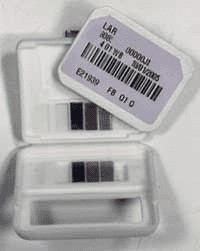
Despite these drawbacks, film badges remain a valuable tool in radiation monitoring. Their affordability and ability to provide a permanent record make them indispensable in many occupational settings.
For more information on radiation monitoring and safety protocols, explore our resources on Radiation Dose in Modern Diagnostic Radiology.
Proper usage and storage are crucial for accurate functioning. When not in use, it is recommended to store film badges in a radiation-free environment to prevent unintended exposure that could lead to false readings. In cases of overexposure, thorough investigations are typically conducted to determine whether the exposure was accidental or the result of improper handling, underscoring the importance of careful and correct usage of these monitoring devices.
For more detailed information on radiation monitoring and safety protocols, explore the resources available at Radiation Dose in Modern Diagnostic Radiology.
Pocket dosimeters provide real-time, immediate feedback on radiation exposure, making them critical for professionals working in high-risk environments. These devices are especially valuable in industrial radiography and other settings where exposure levels can fluctuate rapidly. There are two main types commonly used in these settings: the Direct Read Pocket Dosimeter and the Digital Electronic Dosimeter.
Direct Read Pocket Dosimeters are designed for quick and straightforward checks of radiation levels. Their simple, robust construction allows for easy use and reusability. Key features include:
Digital Electronic Dosimeters offer more detailed information and advanced features. They are particularly useful for continuous monitoring and detailed record-keeping. Key features include:
For more detailed information on how pocket dosimeters can enhance safety in high-risk environments, visit our resource on Radiation Monitoring.
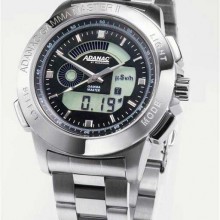
Pocket dosimeters are highly portable and convenient for real-time radiation monitoring, yet they come with certain limitations. One notable drawback is their limited measurement range, which may not be adequate in high-radiation environments. Additionally, they do not provide a permanent record of radiation data, which is essential for long-term monitoring and analysis. The physical design of these dosimeters also makes them prone to damage from drops or impacts, potentially leading to data loss at critical moments.
Despite these limitations, digital electronic dosimeters, a common type of pocket dosimeter, offer several compelling advantages:
For more detailed information on the features and benefits of digital electronic dosimeters, visit our resource on Digital Dosimeters.
Scintillators are specialized materials extensively used in radiation detection due to their unique ability to luminesce when exposed to ionizing radiation. These materials absorb energy from incoming particles and then reemit that energy as light. This process involves the scintillator material entering an excited state. Depending on the composition, the return to a stable state—and thus the emission of light—can range from almost instantaneous to several hours.
Scintillators function by absorbing radiation energy and converting it into visible light. This conversion is crucial for detecting and measuring radiation levels accurately. The emitted light is typically captured by photomultiplier tubes (PMTs) or photodiodes, which convert the light into electrical signals for measurement and analysis.
Due to their precise timing and sensitivity, scintillators are used in various applications:
Scintillator properties can be fine-tuned based on the material composition to optimize their performance for specific applications. Various materials like sodium iodide (NaI), bismuth germanate (BGO), and lutetium oxyorthosilicate (LSO) are chosen for their specific light output, decay time, and radiation absorption efficiency. This customization allows for the development of highly specialized radiation detection systems tailored to the needs of different industries.
For more detailed information on scintillator types and applications, visit our resource on Scintillator Materials.
Scintillators are versatile materials employed in a range of critical applications across multiple sectors. Here are some key areas where scintillators play a pivotal role:
Utilized by the American government, scintillators are essential components in Homeland Security’s radiation detection systems. They help ensure national safety by identifying radioactive materials. For more information on radiation detection in security, visit Homeland Security Radiation Detection.
In scientific research, scintillators are crucial for neutron and high-energy particle physics experiments where precise detection of radiation is essential. They enable researchers to study fundamental particles and forces, advancing our understanding of the universe.
Scintillators play an instrumental role in the energy sector, aiding in the exploration of new resources. They are used in X-ray security systems and nuclear cameras to identify and analyze materials. In gas and oil exploration, scintillators provide detailed internal images, supporting the detection of reserves. Learn more about their use in advanced imaging techniques like computed tomography and laser mammography.
Medical diagnostics benefit significantly from scintillators. They are integral to CT scanners and gamma cameras, enabling detailed internal views crucial for accurate diagnosis. Their precision and sensitivity help in identifying and treating medical conditions effectively.
Scintillators also enhance everyday technology. They improve the quality of images on computer monitors and television sets by converting ionizing radiation into visible light. This application is critical in delivering high-definition visual experiences.
In nuclear safety, scintillators monitor and detect changes in radiation levels, indicating potential instability or leakage. Their reliability ensures the safe management of nuclear materials.
Scintillators contribute to energy-efficient lighting solutions. They generate light in fluorescent tubes, demonstrating their utility in providing bright, efficient illumination. For more on energy-efficient lighting, visit Energy Efficient Lighting.
Scintillators are indispensable in these diverse applications, showcasing their versatility and importance in modern technology and safety. Their ability to detect and convert radiation into usable data or light makes them invaluable across numerous fields.
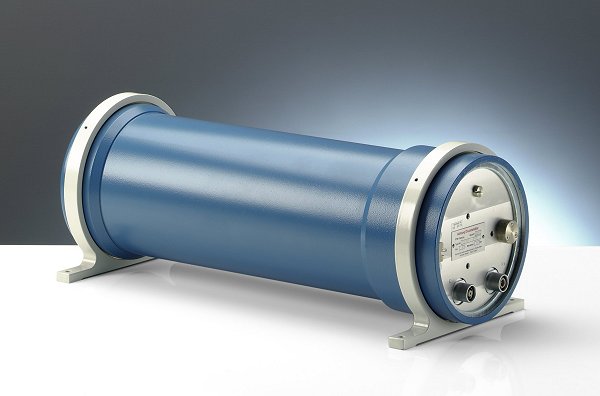
Ionization chambers are fundamental tools in radiation detection, known for their simplicity and effectiveness. These gas-filled radiation detectors are used across various sectors to detect and measure ionizing radiation, such as X-rays, gamma rays, and beta particles. They operate by measuring the electric charge created by ionized gas within the chamber as radiation passes through, providing a direct and reliable method for assessing radiation levels.
Ionization chambers are particularly noted for their uniform response to a wide range of radiation energies, making them exceptionally versatile and dependable for quantitative assessments. They are especially favored for accurately measuring high levels of gamma radiation, which is crucial in environments with significant radiation exposure.
The broad application of ionization chambers spans several critical fields, including:
These applications highlight the integral role of ionization chambers in ensuring radiation safety and compliance in many professional settings. Their reliability and accuracy make them indispensable in monitoring radiation and protecting both people and the environment.
For more detailed information about ionization chambers and their various applications, visit Radiation Detection: Ionization Chambers.
Proportional counters are sophisticated devices that merge the detection techniques of Geiger-Muller tubes and ionization chambers, creating versatile and sensitive radiation detection instruments. These counters are particularly valuable in settings where large area monitoring is required, such as checking for radioactive contamination on personnel, tools, and clothing.
Proportional counters are typically installed as stationary instruments due to the logistical challenges associated with mobilizing the gas supplies necessary for their operation. These counters are specifically designed to optimize the detection of alpha and beta radiation.
For more details on how proportional counters work and their applications, you can visit Radiation Detection: Proportional Counters.
One of the key advantages of proportional counters is their ability to discriminate between different types of radiation, specifically alpha and beta particles. This capability is crucial for applications requiring precise differentiation in radiation types, which is essential for accurate monitoring and safety assessments in various environments, including:
Proportional counters are invaluable tools for detecting and differentiating between alpha and beta radiation, providing accurate and reliable monitoring for safety and research purposes.
For more detailed information on proportional counters and their applications, visit Radiation Detection: Proportional Counters.
Geiger counters, formally known as Geiger-Müller counters, are essential instruments in radiation detection. These devices measure ionizing radiation, which is invisible and cannot be detected by human senses. To understand more about ionizing radiation and its implications, visit this detailed resource.
Geiger counters operate using a Geiger-Müller tube, which detects radiation through ionization within a low-pressure gas contained inside. Here’s a step-by-step breakdown of the process:
While Geiger counters are highly effective for detecting the presence of radiation, they have certain limitations:
Geiger counters are widely used across various fields:
Geiger counters offer a straightforward solution for monitoring radiation with basic electronic components, making them indispensable tools in many professional and scientific applications.
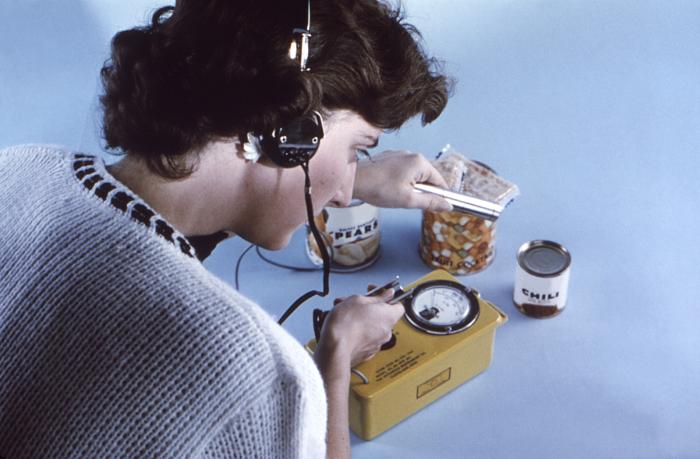
![]()
In this 1963 photograph, a staff member from the Centers for Disease Control and Prevention (CDC) is seen using a Geiger-Müller counter, commonly known as a Geiger counter, to survey food items for potential fallout contamination. This image underscores the critical role of Geiger counters in public health and safety, especially during periods of nuclear tension when monitoring for radioactive contamination in consumables was essential.
Geiger counters are fundamental particle detectors that measure ionizing radiation, including various forms of nuclear radiation such as alpha particles, beta particles, and gamma rays. These devices work by ionizing gases within a Geiger-Müller tube, a process that generates a pulse of current for each detected particle, signaling the presence of radiation.
The simplicity and effectiveness of Geiger counters make them invaluable tools in various fields requiring radiation detection and safety assessments. Here are some key areas where Geiger counters are extensively used:
Since their invention, Geiger counters have been widely adopted across diverse sectors, trusted for their reliability in detecting ionizing radiation and for their straightforward, user-friendly operation. The historical application of Geiger counters highlights their essential role in protecting public health and ensuring safety by monitoring environments and consumables for radiation contamination.
For more information on ionizing radiation and its detection, visit Understanding Ionizing Radiation and Protection.
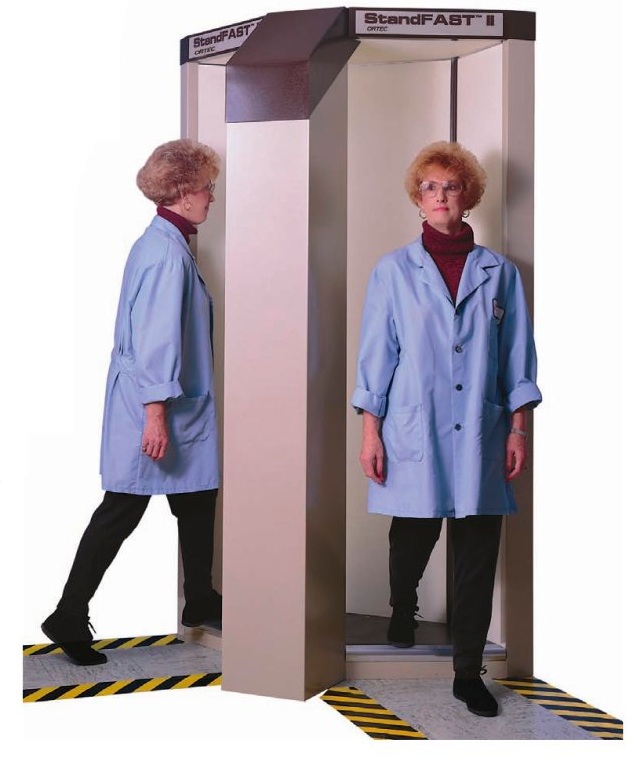
![]()
Whole body counters are sophisticated devices designed to measure the amount of radioactive substances within the human body. They are particularly useful for assessing exposure to gamma radiation, which cannot easily escape the body due to absorption or other interactions that cause the radiation to lose energy. This necessitates precise measurement technologies to accurately gauge internal exposure levels.
These counters operate by detecting gamma radiation emitted from radioactive decay within the body. Due to the varied nature of radiation distribution in the human body, whole body counters are designed to accommodate different positions, allowing measurements to be taken while an individual is sitting, lying down, or standing. This flexibility ensures that radiation measurements are not only accurate but also comfortable for the individual being assessed.
Whole body counters can feature single or multiple detectors, which can be either stationary or mobile. The choice between these configurations depends on the specific requirements of the radiation assessment process:
Whole body counters are crucial in various fields, including:
By accurately measuring internal radiation levels, whole body counters help protect individuals from the potential health effects of radioactive exposure, ensuring compliance with safety standards and aiding in effective health management.
For more detailed information about the applications and technology of whole body counters, visit Whole Body Counters on ResearchGate.
Whole body counting provides several significant benefits in radiation safety and health monitoring:
However, whole body counting also presents several challenges:
Radiation detection, including whole body counting, relies on relative measurements. These readings, typically in counts per minute or per second, must be calibrated against known standards to accurately determine the quantity of radioactive material present. Whole body counters achieve this calibration using a device known as a “phantom,” with the Bottle Manikin Absorber (BOMAB) phantom being the industry standard.
The BOMAB phantom consists of 10 high-density polyethylene containers filled with a precisely known distribution and activity of radioactive material. This setup ensures the accuracy of the system in measuring high-energy photon emitters between 200 keV and 3 MeV.
Calibration and standardization of in vivo counting systems, particularly using the BOMAB phantom, were underscored as critical needs at the 1990 international meeting of in vivo counting professionals at the National Institute of Standards and Technology (NIST). This meeting highlighted the necessity for consistent phantom specifications to ensure accurate and reliable measurements across various in vivo counting systems.
For further information, explore more about the BOMAB phantom and its uses in radiation measurement calibration at the National Institute of Standards and Technology (NIST) website.
Well-designed counting systems excel in detecting low levels of gamma emitters (greater than 200 keV), which are far below the levels that could cause adverse health effects. For example, the typical detection limit for radioactive cesium (Cs-137) is around 40 Bq, whereas the Annual Limit on Intake (ALI)—the amount that would expose a person to a dose equivalent to the worker limit of 20 mSv—is approximately 2,000,000 Bq. These systems can also detect the naturally occurring radioactive potassium in humans, which is not harmful despite its presence in the body.
The remarkable sensitivity of these instruments is largely due to their housing within low background counting chambers. These chambers are typically constructed as small rooms with walls about 20 cm thick, made of low-background steel. They may also be lined with approximately 1 cm of lead to further reduce background radiation. The reduction achieved within these chambers can be several orders of magnitude, significantly enhancing the sensitivity of the counting systems.
Some counting systems use historically low-background steel for additional shielding—such as armor plating sourced from pre-nuclear era warships. This material helps shield against contemporary environmental radiation, further improving the system’s accuracy and sensitivity.
The geometry of the counting system affects the count times, which can range from 1 minute to about 30 minutes. The sensitivity of these counters depends on the counting time; generally, longer counts within the same system result in better detection limits, allowing for more precise and reliable measurements of radioactive substances.
These features make well-designed counting systems indispensable in radiation safety and health monitoring, providing accurate and reliable data essential for assessing exposure levels and ensuring compliance with safety standards.
For more detailed information on radiation detection and safety, visit the National Institute of Standards and Technology (NIST) website.
Cytogenetic biodosimetry is a powerful method that uses the body’s biological response to radiation to accurately estimate exposure levels. This technique is based on the principle that ionizing radiation, when absorbed by the human body, transfers energy to cells and tissues, causing chromosomal DNA damage. This damage occurs in proportion to both the intensity and type of radiation absorbed.
Radiation exposure induces chromosomal abnormalities such as breaks and rearrangements. In cytogenetic biodosimetry, these abnormalities are carefully measured and analyzed. The process involves comparing the frequency and severity of chromosomal abnormalities against a calibration curve, which is established through extensive research. This comparison allows scientists and healthcare providers to accurately estimate the radiation dose a person has received.
One of the key strengths of cytogenetic biodosimetry is its reliability across different conditions. Whether lymphocytes—the type of white blood cells that exhibit chromosomal damage—are inside or outside the body at the time of radiation exposure, they consistently express the extent of chromosomal damage accurately. This makes cytogenetic biodosimetry an essential tool in both medical diagnostics and radiation emergency response.
Cytogenetic biodosimetry plays a crucial role in ensuring accurate radiation exposure assessments. By leveraging the body’s natural biological responses, this technique helps safeguard public health and enhances the effectiveness of medical and emergency interventions.
For more information on radiation detection and safety, visit the National Institute of Standards and Technology (NIST) website.
Ionizing radiation can cause significant damage to human cells and tissues at the molecular level, particularly affecting chromosomal DNA. This damage is directly proportional to both the type and amount of radiation energy absorbed by the body. Cytogenetic biodosimetry employs human peripheral blood lymphocytes (HPBLs) to detect and quantify this damage. Among the chromosomal abnormalities induced by radiation exposure, dicentric chromosomes are a common and highly indicative marker.
Cytogenetic biodosimetry involves meticulous quantification of dicentric chromosomes within HPBLs. The frequency of these abnormalities is compared against a pre-established calibration curve to estimate the radiation dose received. This method’s validity is reinforced by the consistent manifestation of radiation-induced chromosomal damage in lymphocytes, regardless of their location in the body.
The dose assessment is conducted by comparing the observed genetic damage with calibration curves. These curves account for variables such as the type of radiation, dose rate, whole or partial body exposure, the time elapsed between exposure and sample collection, and the specific methods used for cytogenetic analysis.
Cytogenetic biodosimetry is crucial when physical dosimetry tools are unavailable or infeasible. It has proven invaluable in various radiation emergencies globally, including notable incidents at Chernobyl, Goiânia, and Tokaimura. Beyond emergency responses, cytogenetic analysis is routinely used to investigate suspected occupational overexposures, providing essential data to confirm or rule out significant radiological exposure.
For more information on managing and assessing radiation exposure in occupational settings, visit our detailed guide on Occupational Radiation Exposure Limits.
The Baby Tooth Survey, initiated by the Greater St. Louis Citizens’ Committee for Nuclear Information in collaboration with Saint Louis University and the Washington University School of Dental Medicine, aimed to assess the impact of nuclear fallout on human health. This pioneering research project focused on measuring the accumulation of strontium-90—a carcinogenic radioactive isotope produced by atmospheric nuclear tests—in the deciduous teeth of children. Strontium-90, due to its chemical similarity to calcium, is readily absorbed from water and dairy products into bones and teeth.
The survey team distributed collection forms to schools across the St. Louis, Missouri area, with an ambitious goal to collect 50,000 teeth annually. By the project’s conclusion in 1970, over 300,000 teeth had been collected, providing a vast dataset for analysis.
The profound impact of the Baby Tooth Survey’s findings resonated at the highest levels of international policy. The data collected were instrumental in convincing U.S. President John F. Kennedy of the urgent need for a nuclear test ban, leading him to champion and ultimately sign the Partial Nuclear Test Ban Treaty alongside the United Kingdom and Soviet Union. This landmark treaty significantly curtailed above-ground nuclear weapons testing, thereby mitigating the release of nuclear fallout into the environment and marking a crucial step in global nuclear disarmament efforts.
The success and methodology of the Baby Tooth Survey also set a precedent for similar research initiatives worldwide, illustrating the power of scientific inquiry in influencing public health and policy.
The legacy of the Baby Tooth Survey continues to underscore the importance of scientific research in shaping public health initiatives and forging international health and environmental standards. A prime example of such influence is the Tooth Fairy Project in South Africa, established to explore the potential health impacts of radioactivity and heavy metal contamination linked to acid mine drainage from extensive gold mining.
These investigations are critical as they provide valuable insights into the environmental impacts of industrial activities and inform strategies for mitigating these impacts in affected communities.
Learn more about the impact of the Baby Tooth Survey and its methodologies in shaping public health and environmental policies through similar initiatives worldwide at Reducing Radiation Exposure in Digital Imaging.
The Kearny Fallout Meter (KFM) is a simple yet effective radiation meter that can be constructed using everyday materials. This device was designed to enable individuals to measure fallout radiation levels following a nuclear event using commonly available items. The KFM can be made from a coffee can or pail, a small amount of gypsum board, monofilament fishing line, and aluminum foil.
The operational principle of the KFM involves the use of electrostatic principles to detect ionizing radiation:
– **Aluminum Foil Strips:** Inside the can, two strips of aluminum foil serve as leaves.
– **Electrostatic Charge:** An electrostatic charge is applied to these leaves; since they carry the same type of charge, they repel each other.
– **Ionization and Measurement:** Radiation within the can ionizes the air, altering the electric charge and affecting the degree of repulsion between the two foil strips. The extent of their repulsion is then used to gauge the level of radiation in the surrounding area.
Comprehensive plans for building a Kearny Fallout Meter are available and can be accessed at this link. This DIY approach not only makes radiation measurement accessible but also serves as an educational science project that demonstrates the effects of ionizing radiation in a tangible way.
“The KFM was developed by Cresson Kearny based on research conducted at Oak Ridge National Laboratory.”
The KFM was developed by Cresson Kearny, who based his work on research conducted at Oak Ridge National Laboratory. His efforts are detailed in the civil defense manual “Nuclear War Survival Skills,” which aimed to provide the public with practical survival techniques and tools in the event of nuclear fallout, emphasizing self-reliance and preparedness.
For more detailed instructions on how to build a Kearny Fallout Meter, refer to the original document by Cresson Kearny at the provided link. This resource outlines the step-by-step construction process and the science behind the device, making it a valuable tool for understanding and preparing for radiation exposure.

A Geiger-Muller counter is a device used to detect ionizing radiation. It functions by using a Geiger-Muller tube filled with gas. When ionizing radiation passes through the tube, it ionizes the gas, producing an electrical pulse that is counted and displayed as a measure of radiation intensity.
Scintillation detectors detect radiation by using a scintillating material that emits light when struck by ionizing radiation. This emitted light is then captured and amplified by a photomultiplier tube, which converts it into an electrical signal proportional to the radiation intensity.
An ionization chamber is used to measure radiation exposure by collecting ions produced by ionizing radiation in a gas-filled chamber. The collected ions generate a current that is directly proportional to the amount of radiation, allowing for accurate measurement of radiation dose.
Dosimeters are personal radiation monitoring devices used to measure the cumulative radiation dose received by an individual over time. They are essential for ensuring that radiation workers do not exceed safe exposure limits. Dosimeters can be worn as badges or rings and provide critical safety information.
Neutron detectors are specifically designed to detect neutrons, which are neutral particles that do not ionize directly. These detectors often use materials that undergo nuclear reactions with neutrons, producing secondary charged particles that can be detected and measured to determine neutron radiation levels.
Inadiquate patient shielding during radiography can contribute to increased patient dose. For radiologic technologists, shielding is particularly important to protect anatomic areas of the patient near the exposure field, but should not interfere with obtaining diagnostic information.
If you recently purchased a course but are having trouble seeing it below, it’s most likely a caching issue. Try clicking the button below to refresh the page. If that doesn’t work, follow the manual instructions below based on your operating system:
Windows/Linux:
Hold the Ctrl key and press the F5 key.
Or, hold down Ctrl and ⇧ Shift and then press R.
Mac:
Hold down the ⇧ Shift and click the Reload button.
Or, hold down ⌘ Cmd and ⇧ Shift and then press R.